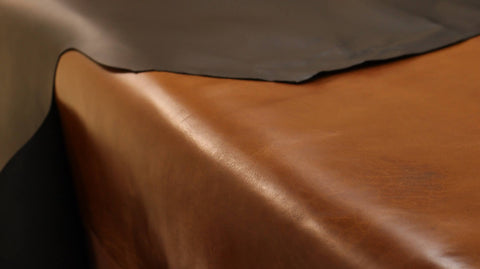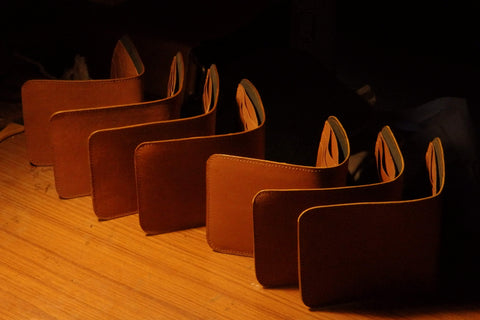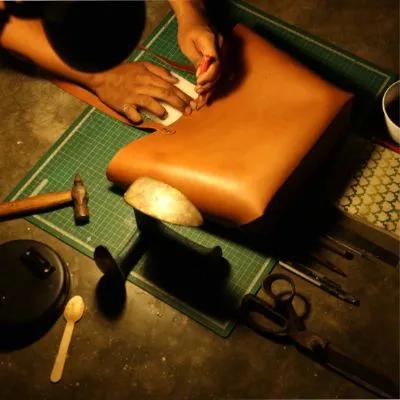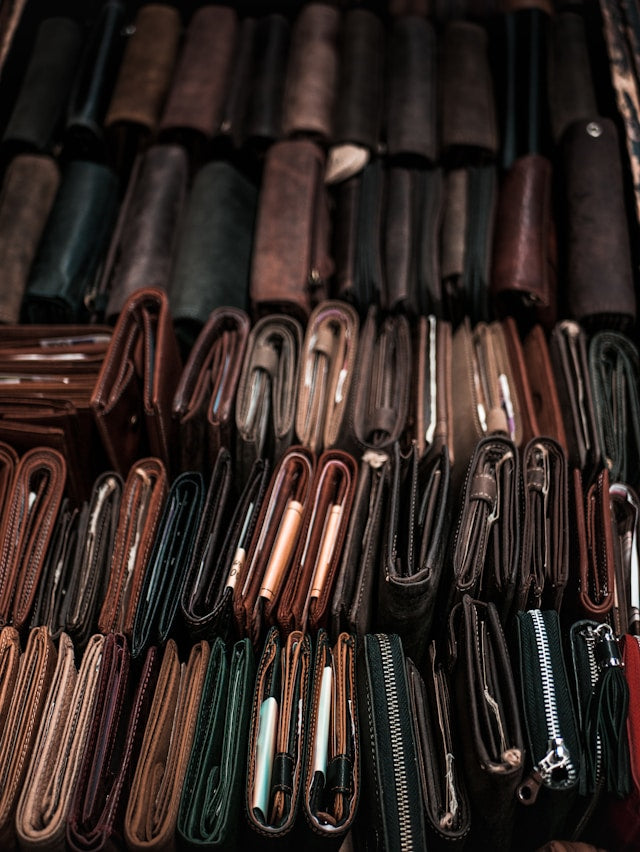What is a High Quality Leather Wallet?
Ever wonder why your wallet always seems to fall apart, no matter how much you spend? It's not magic (although sometimes it feels that way). Wallets come in all shapes, sizes, and most importantly, materials. While nylon or polyester wallets offer consistency (think: same quality for every price), leather is a whole different story.
But here is the catch: not all leather is created equal. Some wallets are about as impressive as a cardboard box. So, how do you sniff out the genuine quality wallet that deserves a place in your pocket? We will show you exactly what to look for in a wallet and don't worry, we won't get too technical.
The Anatomy of a Well-Made Wallet
First things first, the material of the wallet.
How can you tell if a wallet is made with real leather?
Sure synthetic materials can try to mimic the look of leather, but don't be fooled! Real leather is a whole different beast. It is like comparing a comfy pair of denims to those stiff plastic rain pants. No contest, right?
When shopping for Leather Goods, always ask the seller: "is it genuine full grain leather?". And if you want to be sure, all you need is your sense of smell and touch.

The Smell of Real Leather:
Leather has a very distinct smell. It doesn't have a specific smell but a bunch of earthy and slightly sweet musky aromas. The best way I can think of to describe the different smells that make up the scent of leather is the following.
- An Old Bookshop: Imagine walking into a bookstore with old books. Leather smells similar, a musky base with the earthy scent of old paper that hangs in the air but richer.
- A Warm Vanilla Cookie: Not super sweet, but there is a slight whiff of pleasant warmth and a touch of sweetness in the air. This comes from the natural oils used to treat the leather.
- The Hint of a Campfire: a slight smoky scent can sometimes be present in leather that comes from traditional tanning techniques.

Real leather has a depth to its scent, like it is telling a story, It is not overpowering, but it is a comfortable, warm kind of feeling in its smell.
Thickness & Type of Leather Used in a Wallet:
Your wallet needs to be tough enough to handle your everyday adventures, but not so bulky that it weighs you down. That's where the leather thickness comes in.
Too thin and it rips easily or starts to take the shape of whatever is inside, too thick and it feels like a brick in your pocket. The sweet spot? Leather that is a few millimeters thick- about the thickness/width of a single coin. This gives you a wallet that's both comfortable and a built that will last.

So how do you spot the wallet with the right stuff?
A good quality wallet won't have any cardboard surprises hiding inside to make it feel temporarily sturdy for the glass display. Wallets with thin leather and cardboard or plastic inserts, is a sign of flimsy leather trying to appear tough. A good leather wallet should be able to hold its form naturally.

When shopping, also ask about the “grain” of the leather. Full Grain Leather is the king for wallets and what you should be looking for. This grade of leather offers top-notch durability. Full-grain leather might have some tiny bumps or imperfections, but that's just nature's way of saying “This is the real deal”

What kind of Stitching should you look for in a Leather Wallet?
The stitching on your wallet is like the seams of your favorite pair of denims - it holds everything together and adds a touch of personality. But unlike those rushed repairs you make in the dark (we have all been there!), good stitching takes time and skill.

There are two main types: hand stitching, and machine stitching. Hand stitching is a time-intensive process - but precise and built to last. Machine stitching is also not bad when done right with the right thickness of thread, care, and patience. It can be just as tough and durable.

Here is what to look for in top-notch stitching:
- Thick thread, in Nylon or waxed cotton, is a sign of a good choice.
- Tight and sturdy stitching throughout, with no loose threads or skipped stitches.
- Even stitches all in uniform distance from each other.
Precise, and even stitching on our Bifold Leather Wallets- The Bicyclist
Beware of shady stitch jobs: some manufacturers use a quick, weak stitch to save time. Check the underside of the stitching for any gaps or a lousy finish. When you buy an expensive wallet, you deserve a wallet with a strong foundation, not one held together by sewing shortcuts.

What Kind of Edges Should a Leather Wallet Have?
Next up, let's talk about the edge of your wallet, This might seem like a minor detail, but it reveals a lot about the quality.
There are two main types:
- Folded edges: These are common in mass-produced wallets. They are quicker to make but might not hold up over time. Remember when we talked about the thickness of leather, when manufacturers use thin leather with cardboard inserts this is the most commonly used technique to finish their edges.

- Cut edges: they are found on higher-quality wallets. These can be finished in two ways
- Burnished edges: this process creates a smooth, rounded edge with a nice shine.
- Hand painted Edges: have a uniformly colored finish, either matching the leather or offering a contrasting pop.

In short, a well-finished edge whether burnished or painted- is a good indicator of a quality wallet.
Corners.
While we are on the topic of edges check out the corners as well. A square corner is easier to make but tends to wear out faster. A rounded corner takes time to construct but adds to the durability of the wallet. Rounded corners also make it easy to slide out from the pockets and needless to say, looks more elegant and charming.

Lining.
Peak inside your wallet- that's where the lining lives! This can be made from various materials like polyester, nylon, or cotton, but the most exclusive and luxurious material is soft Sheep leather skin.

A Leather lining doesn't just feel amazing, it also adds some serious muscle to your wallet's lifespan. But remember, a quality lining shouldn't be a loose cannon! It should be securely attached to the main leather, not pinch away at the first tug, so make sure you give a slight nudge and check for that before making the purchase.
That's All Folks!
No more mystery materials or misleading marketing. You can now confidently navigate the world of leather wallets, choosing a companion that's not just stylish, but built to endure all your adventures with you. So go forth and find the perfect leather wallet that reflects your personality and will age gracefully alongside you, telling your story with every touch and every wear, Happy wallet hunting.







